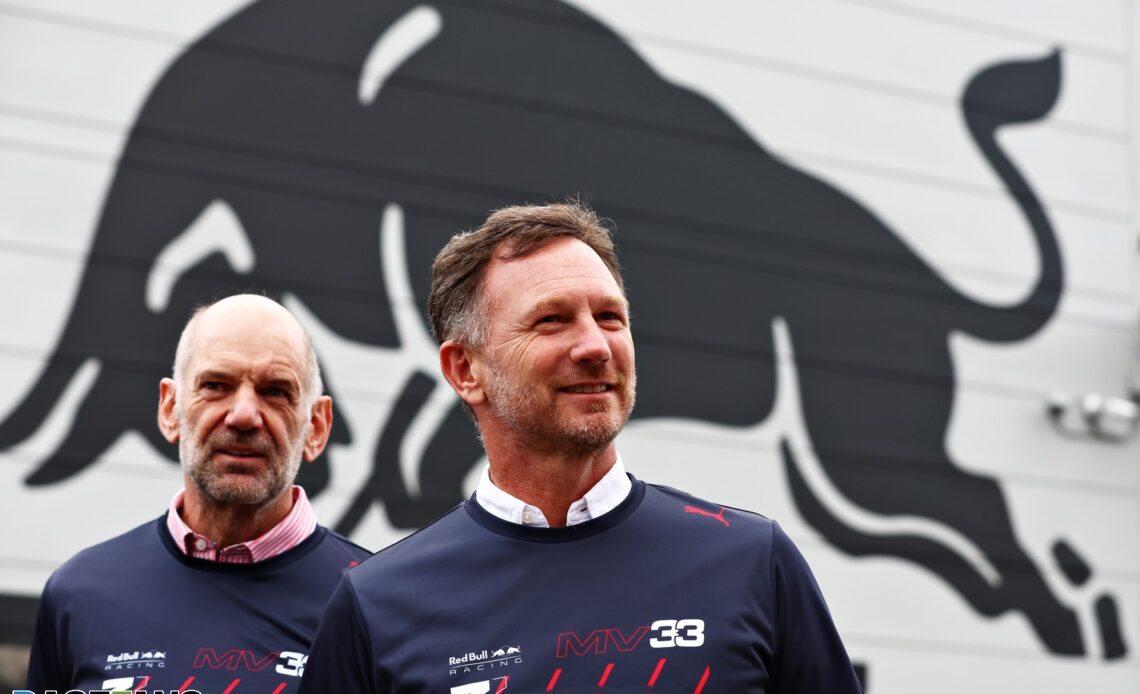Red Bull’s chief technology officer Adrian Newey says the lower level of aerodynamic development the team is permitted for 2023 will not “make much difference” if they approach it correctly.
The team was already due to have the lowest aerodynamic development allocation for next year, having won the constructors’ championship. This was cut even further after they were found to have exceeded the budget cap during 2021.
In addition to their $7 million fine for that violation, Red Bull’s allocated time and usage figures for wind tunnel and Computational Fluid Dynamic (CFD) testing was reduced by a further 10%. They will therefore be permitted 63% of the baseline aerodynamic testing allocation, down from 70%, with 2022 runners-up Ferrari next lowest on 75%.
“The reduction of wind tunnel testing means we can therefore evaluate less different components, less different ideas,” said Newey in a video released by the team. “If we’re really smart and always put on the right things, on the model, then of course it doesn’t make much difference.”
The speed with which Red Bull can take new parts from CFD modelling to the wind tunnel model and then to the actual race car, and how accurately they simulate the gains they produce, will be crucial to how the team copes with the disadvantage of its reduced testing allocation. Rivals teams have pointed to Red Bull’s rapid and reactive rate of development as a strength of theirs.
The baseline figures provided by F1 is 400 hours of wind tunnel time over 320 runs, with no more than two runs taking place a day. Red Bull’s 2023 limit will be 50.4 hours with the tunnel operating at 54kph or above, with that development time having to be completed in less than 202 runs. The tunnel can only be used above 18kph twice a day, and each time it does it is considered one of the allocation of runs.
CFD usage is measured in Mega Allocation Unit hours (MAUh), and the baseline is six of those to test a limit of 2000 distinct three-dimensional parts. A full F1 car can be considered a single part, but changes to that design will constitute it being a new part (called a Restricted Aerodynamic Test Geometry in F1’s regulations). Following their penalty, Red Bull will be capped at 1,260 parts over 3.78 MAUh of CFD time.
Newey, whose designs have taken Red Bull to five constructors championships since 2010, predicts their 2022 rivals will put up stiffer competition next year.
“Ferrari won’t be resting,” he said. “They…
Click Here to Read the Full Original Article at RaceFans…

